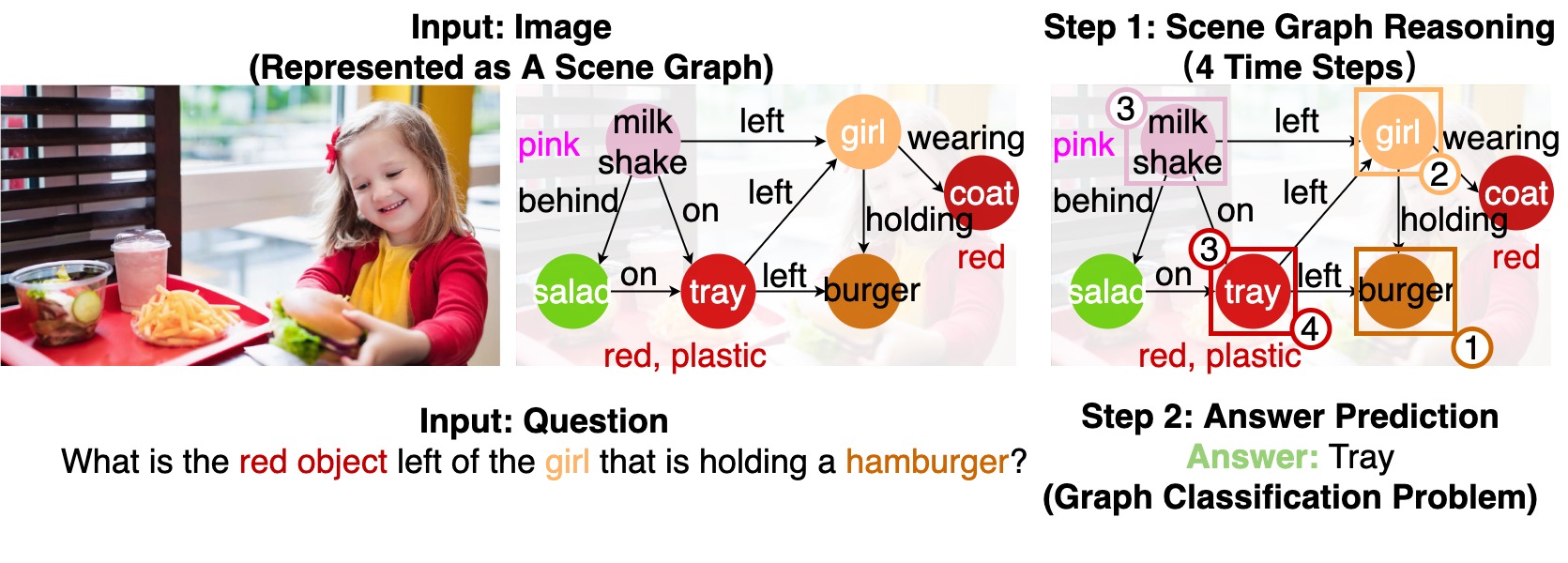LRTA: A Transparent Neural-Symbolic Reasoning Framework with Modular Supervision for Visual Question Answering
The predominant approach to visual question answering (VQA) relies on encoding the image and question with a "black-box" neural encoder and decoding a single token as the answer like "yes" or "no". Despite this approach's strong quantitative results, it struggles to come up with intuitive, human-readable forms of justification for the prediction process. To address this insufficiency, we reformulate VQA as a full answer generation task, which requires the model to justify its predictions in natural language. We propose LRTA [Look, Read, Think, Answer], a transparent neural-symbolic reasoning framework for visual question answering that solves the problem step-by-step like humans and provides human-readable form of justification at each step. Specifically, LRTA learns to first convert an image into a scene graph and parse a question into multiple reasoning instructions. It then executes the reasoning instructions one at a time by traversing the scene graph using a recurrent neural-symbolic execution module. Finally, it generates a full answer to the given question with natural language justifications. Our experiments on GQA dataset show that LRTA outperforms the state-of-the-art model by a large margin (43.1% v.s. 28.0%) on the full answer generation task. We also create a perturbed GQA test set by removing linguistic cues (attributes and relations) in the questions for analyzing whether a model is having a smart guess with superficial data correlations. We show that LRTA makes a step towards truly understanding the question while the state-of-the-art model tends to learn superficial correlations from the training data.
PDF Abstract




 GQA
GQA